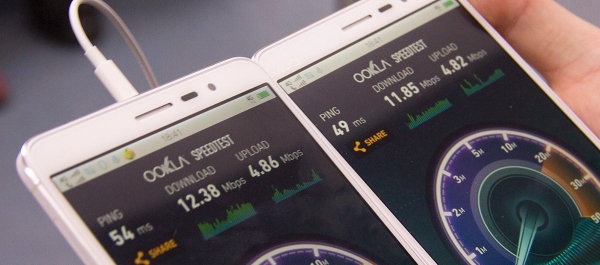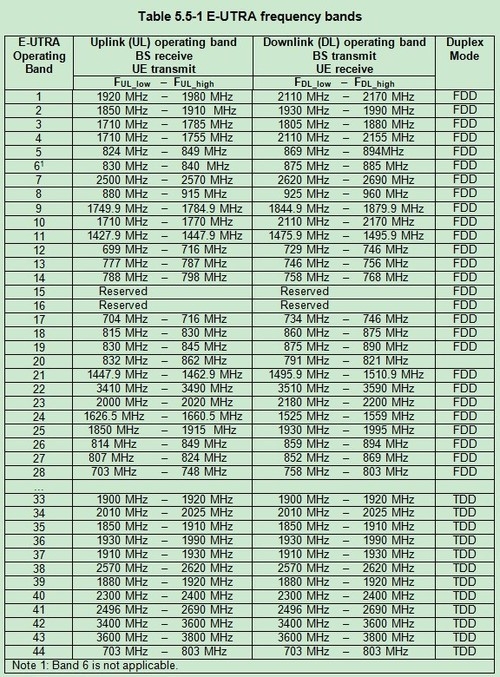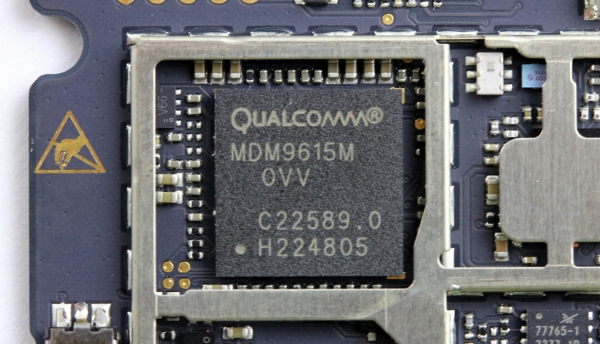
With the popularization of 4G, telecommunication terms such as "5 mode, 13 frequency, 7 mode, 19 frequency" and so on began to bombard consumers. In addition to judging whether they can support their own mobile phone cards, it is now necessary to consider whether the mobile phone can support the corresponding 4G band. If you want to buy a parallel mobile phone, then you must consider the difference between the domestic and international network frequency bands, as well as the problem of 3,4G signal drop.
Many people may have heard these terms are already headlong, so this article will be popular science popular network system, I hope this article can help everyone understand the network support list in the mobile phone parameter list, can determine whether the machine supports your phone card Can I use domestic 4G and whether it has the potential to crack the Internet?
But how do you know what network standard your mobile phone card is? This is another profound problem of human life. Here is a simple science question about network system. All stories need to start with the characteristics of electromagnetic waves. From infrared ultraviolet and visible light, to wifi and mobile phone signals, all are electromagnetic waves... Well, they have limited space and they say something conclusive.
The 2/3/4G networks of mobile phones, like wifi, have their own frequency range, which is the occupied frequency band. Due to the limited frequency resources, in order to facilitate management, international and “relevant departments†are different devices, and artificially divided different frequency ranges (ie, frequency bands). For example, a common mobile Unicom GSM mobile phone occupies the 900/1800/1900 MHz band, while a telecommunications CDMA mobile phone occupies the 800 MHz band (CDMA1X).
The only rule to keep in mind is that the higher the electromagnetic wave frequency (MHz value) , the shorter the propagation range and the more difficult it is to cover the signal. This is also an important reason why people always say that telecom mobile phone signal (800MHz) is always better than Mobile Unicom (900MHz).

The above figure shows the distribution of 4G spectrum
In the 4G era, the network is not only divided into two kinds of FDD-LTE and TDD-LTE, but the spectrum of each network is divided into a considerable number of frequency bands. The first time the author saw the above table is also deeply It's awkward.
The first column in the table is the artificial frequency band label. Every common band1, band2, or B1, B2 generation refers to the uplink and downlink frequencies of that line. Band1-28 is FDD-LTE band because FDD uses separate bands for uplink and downlink, so their uplink and downlink bands are different. Band33-44 is the TDD-LTE band because it is a shared band for uplink and downlink. The same as the numbers.
After understanding the meaning of the band, it is actually enough to pick the phone. When buying a machine, click on the parameter specification page. Manufacturers will indicate the network standard supported by the machine. But what are the ghosts they write?

Samsung S6 supported network standard

Network standard supported by Apple iPhone6s

Moto X Style Supported Network Format
Relatively speaking, Motorola's network standard form is more careful and simple. But unfortunately, not all manufacturers will be so marked. Moreover, China Mobile Unicom Telecom 3 major operators, its 2/3/4G standard is almost the same, can not tell at one and a half moment, or directly to see the conclusion.
There are 2 kinds of 2G networks (guaranteed that mobile phones can talk, and low-speed networks):
Mobile Unicom is GSM (900/1800/1900 MHz)
Telecom's CDMA 1X (800MHz, abbreviated BC0), sometimes called CDMA800
There are 3 kinds of 3G networks:
Mobile 3G is TD-SCDMA, with poor speed and signal coverage. Note that it is very poor
Unicom 3G is WCDMA (1900/2100+1700/850MHz, ie, band 2, 4, 5), and sometimes also written as UMTS, HSDPA. It is the fastest 3G system, but the signal coverage of small cities is poor
Telecom 3G is CDMA EV-DO (1900/800MHz, band class 1, 10, abbreviated BC0, BC10), medium speed but best signal
There are 2 types of 4G networks:
Mobile only has TD-LTE, coverage band band38/39/40, now the best signal coverage
Unicom and Telecom's TD-LTE coverage band 40/41, FDD-LTE is mainly band 1/3, band7/17/20 not yet got a license. Unicom's FDD coverage is much better than its TD network, but its coverage is worse than that of mobile, and it is still on the way to rural coverage.
Here, the question of "five-mode, thirteen-frequency, seven-mode, nineteen-band" can be answered. “X-mode†refers to the 2/3/4G of the three major domestic operators. There are a total of 7 network formats (2 in 2G, 3 in 3G, and 2 in 4G), and the “X-band†is It is the number of frequency bands in the network standard (such as band1/3/7 in 4G, etc.).
To be more concise, mobile is looking for TD-SCDMA, Unicom looking for WCDMA or UMTS, and telecommunications CDMA. Going to the 4G field, as long as you look for FDD's band1/3, TD's band38/39/40/41 will be able to run 4G in China.
If you find that your phone's parameter list doesn't support these bands, or only supports some bands, then you have to consider cracking.
The demand for cracking the network first originated from the parallel market, and users of parallel mobile phones such as the US/Japan/Europe/Port. Although the price of consignment machines is conscience, due to the differences in domestic and international network frequency bands and the lack of configuration data of domestic carriers for parallel machines, many parallel cargo machines will encounter many network restrictions in China.
The other part of the demand for cracking comes from domestic operators' customized machines. Mobile/China Unicom/Telecom versions of mobile phones are generally blocked by other operators' networks. Once another operator's card is replaced, the mobile phone may have to be replaced. Therefore, opening the network lock and 4G, has become a lot of machine friends toss the beginning of no return.

Qualcomm's MDM9615M baseband chip
Baseband + radio frequency chip + software, together determine what the network standard cell phone can support, while the baseband and RF chip are uncontrollable hardware, cracking methods can only be established on the basis of modifying the software. Therefore, before embarking on/coming the road to crack, we must first check whether the baseband of the target machine and the RF chip support the target network standard.
For example, the US version of the S6 edge is divided into the ATT, Sprint, and Verizon editions. The former two use Samsung's own Shannon baseband (Shannon 333). The latter, like the G9250, which supports the entire network, is using Qualcomm's MDM9635M baseband, so the latter has its own hardware infrastructure.
The good news is that starting from the Qualcomm Xiaolong 800, many Android phones using Qualcomm processors have the hardware foundation of the 3G 4G. Among the more famous models are the V version of the HTC M8 and Note 3 (900V). Nexus 5 (D820), Nexus6, Moto X, etc.
Of course, it does not rule out that the manufacturer does not have the RF chip and antenna of Netcom when it is equipped with a full Netcom baseband, so if the conditions are available, the model of the radio frequency chip of the machine must be identified. For example, the HTC M8 and ATT versions of the Samsung S5 are all using the Xiaolong 801+ Qualcomm WTR1625L RF chip, while the older HTC DNA and Nexus 5 both use the Xiaolong 800 (MDM9615 baseband) and Qualcomm WTL16605 RF chips. Some hardware has cracked the whole network 4G machine.
How to solve the problem of network restrictions, will stay in the next section of science to answer, so stay tuned.
![<?echo $_SERVER['SERVER_NAME'];?>](/template/twentyseventeen/skin/images/header.jpg)